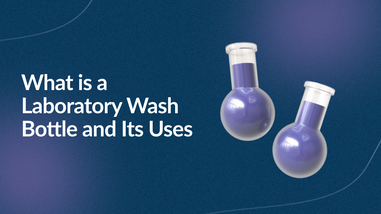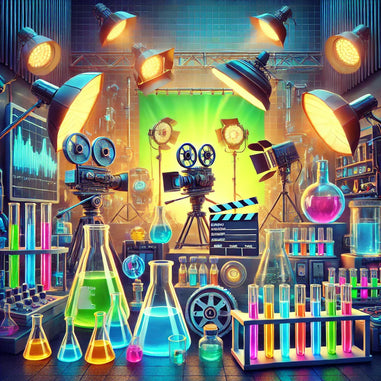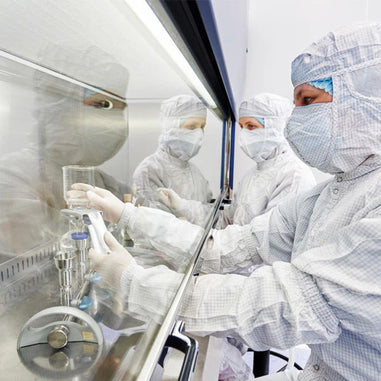- No products in the cart.
According to the Food and Drug Administration (FDA), if your laboratory produces or tests things like food additives, biologicals, or medical devices, then you are subject to follow the FDA’s Code of Federal Regulations for good laboratory practice for nonclinical studies. If your lab produces or tests anything intended for consumption by humans or animals, this post is for you!
Getting through these codes to keep your lab compliant can be a daunting task, but is incredibly important. In this post, we will break down the requirements of the FDA for good laboratory practice for nonclinical studies. In particular, we will focus on how to keep your lab equipment compliant, since the output of any lab is dependent on functional, well-maintained equipment.
Good Laboratory Practice #1: Equipment design and location
The FDA specifies that your lab equipment should be “of appropriate design and adequate capacity to function according to the protocol.” This means that your equipment should be designed and set up for the purpose you wish to use it for. Moreover, the equipment should be located in a place that is suitable for regular “operation, inspection, cleaning, and maintenance.”
To stay compliant in this category, do your homework on all lab equipment. Talk to the manufacturer about the purpose you plan to use it for and any relevant environmental considerations of your location. This will not only ensure that you’re using the equipment correctly, but also that you are getting the most out of your purchase.
Good Laboratory Practice #2: Maintenance and calibration
Regular maintenance of your laboratory equipment is essential to keep it functioning as it was designed to. Likewise, measuring instruments should be regularly and appropriately calibrated to ensure accuracy. The FDA instructs, “equipment shall be adequately inspected, cleaned, and maintained” in order to stay compliant.
Purchase from a supplier that demonstrates good communication, knowledge, and technical assistance. Service, prompt response and feedback are key elements to look for in a lab supplier. Always know where to access maintenance information for your equipment (manuals, SOPs, manufacturer website) and keep it accessible to everyone who operates it. Whenever you have questions, always contact the manufacturer for more information. When it comes to compliance with the FDA, it’s always a “‘better safe than sorry”’ situation.

Good Laboratory Practice #3: Standard operating procedures (SOPs)
Written and readily available standard operating procedures are imperative “to insure the quality and integrity of the data generated in the course of a study,” according to the FDA. These written SOPs are a great way to standardize how equipment is operated to keep your results consistent across operators and time. Your SOPs should be designed by senior operators and approved by management with the goal to contain sufficient information. Any deviations should always be approved and documented.
The FDA requires that your SOPs define, in detail, “the methods, materials, and schedules to be used in the routine inspection, cleaning, maintenance, testing, calibration, and/or standardization of equipment.” Your written SOPs should also indicate a person “responsible for the performance of each operation,” who will serve as a go-to source for questions or issues faced during operation.
Finally, your written SOP should also outline the steps to take in the case of equipment failure or malfunction. By outlining – in detail – your operating procedures of lab equipment, you not only ensure FDA compliance but also the standardized, appropriate usage of your equipment.
Good Laboratory Practice #4: Records
A written record of equipment operation is critical to the traceability in the event of any issues. The FDA specifies that “written records shall be maintained of all inspection, maintenance, testing, calibrating and/or standardizing operations” of your equipment.
These records should contain the date and a description of the operation. Mechanical failure, damage, or malfunction should also be recorded and dated, as well as any repairs made to fix such issues. Some equipment will include software that can log and record such failures. Be aware of what your equipment is (and is not) capable of and how to access any such logs by talking to the manufacturer.
You can take the first step into compliance by purchasing equipment from a supplier you can communicate with and trust. Compliance to the FDA’s good laboratory practice for nonclinical studies shouldn’t need to be a headache. Following the guidelines we discussed in this post will, ultimately, help your lab equipment function smoothly and generate consistent, reliable results.
For more information, reference Title 21 (Food and Drugs), Part 58 (Good Laboratory Practice for Nonclinical Studies) in the FDA’s electronic Code of Federal Regulations.
For over 40 years, Lab Pro has been committed to delivering a complete laboratory solution by offering the highest quality products, chemicals, reagents, microscopes and imaging equipment for nonclinical studies performed worldwide. Come visit the biggest Lab Supply showroom in the Bay Area, or contact us online or at 888-452-2776.












































